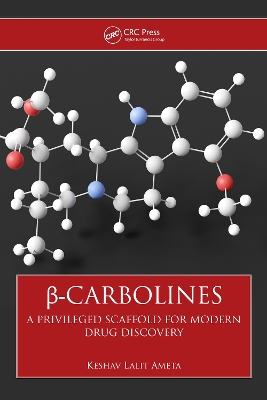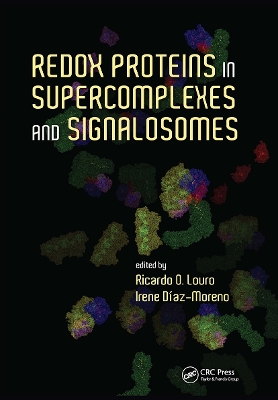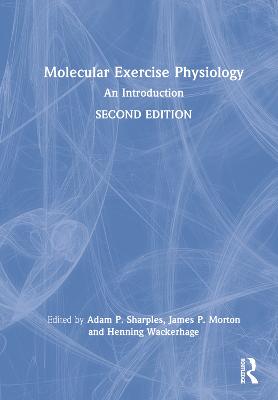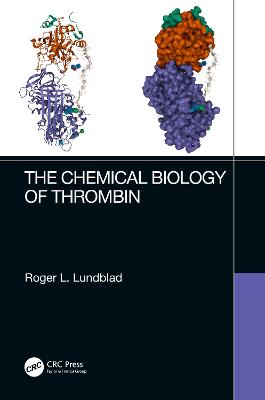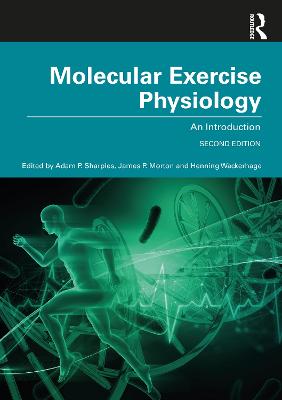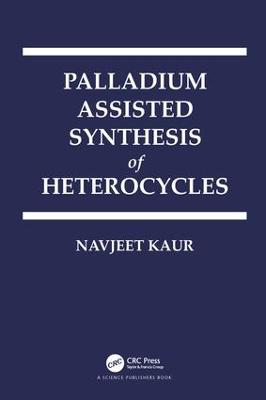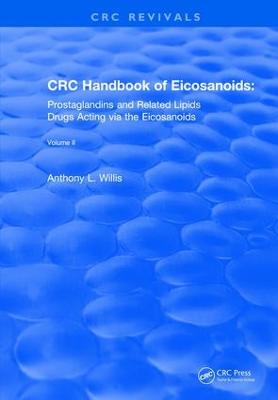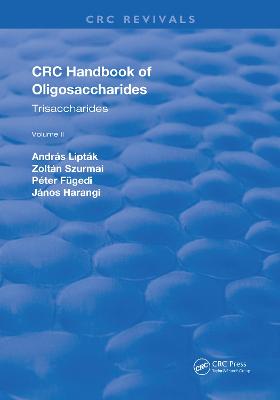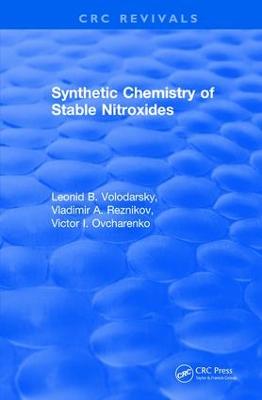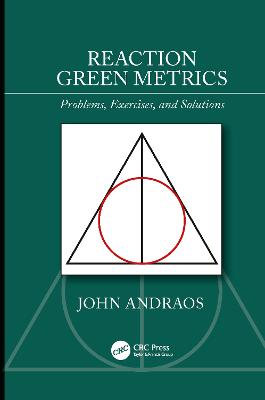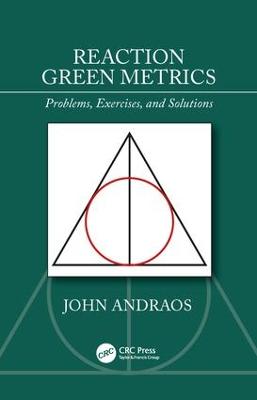Biochemistry
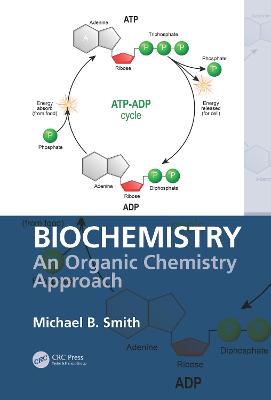 -10%
portes grátis
-10%
portes grátis
Biochemistry
An Organic Chemistry Approach
Smith, Michael B.
Taylor & Francis Inc
05/2020
472
Dura
Inglês
9780815367130
15 a 20 dias
993
Preface...............................................................................................................................................xi
Author............................................................................................................................................. xiii
Common Abbreviations....................................................................................................................xv
Chapter 1 Fundamental Principles of Organic Chemistry............................................................1
1.1 Bonding and Orbitals.........................................................................................1
1.2 Ionic versus Covalent Chemical Bonds..............................................................2
1.3 Breaking Covalent Bonds...................................................................................3
1.4 Polarized Covalent ?-Bonds...............................................................................4
1.5 Reactive Intermediates.......................................................................................5
1.6 Alkanes and Isomers..........................................................................................7
1.7 The IUPAC Rules of Nomenclature...................................................................8
1.8 Rings Made of Carbon: Cyclic Compounds..................................................... 11
1.9 Hydrocarbon Functional Groups...................................................................... 11
1.10 Heteroatom Functional Groups........................................................................ 13
1.10.1 C-X Type Functional Groups........................................................... 13
1.10.2 C=X Type Functional Groups............................................................. 17
1.11 Hydrogen-Bonding and Solubility.................................................................... 21
1.12 Rotamers and Conformation............................................................................24
1.13 Conformations with Functional Groups...........................................................30
1.14 Conformation of Cyclic Molecules.................................................................. 31
1.15 Stereogenic Carbons and Stereoisomers.......................................................... 37
1.16 Absolute Configuration [(R) and (S) Nomenclature]........................................ 39
1.17 Specific Rotation..............................................................................................44
1.18 Diastereomers...................................................................................................46
1.19 Alkene Stereoisomers: (E) and (Z)-Isomers..................................................... 51
Homework...................................................................................................................54
Chapter 2 The Importance of Water in Biochemical Systems..................................................... 55
2.1 Hydrogen Bonding............................................................................................ 55
2.2 Solubility.......................................................................................................... 58
2.3 Water Molecules in Biological Systems........................................................... 59
2.4 Acid-Base Equilibria in Water......................................................................... 61
2.5 Buffers..............................................................................................................65
2.6 Structural Features That Influence Acid Strength............................................66
2.7 Acid and Base Character of Alcohols, Thiols, Amines and Carbonyls........... 67
2.7.1 Acids.................................................................................................... 67
2.7.2 Bases....................................................................................................69
2.8 Elimination Reactions of Alkyl Halides (E2 and E1 Reactions)..................... 71
2.9 Acid-Base Equilibria in Amino Acids............................................................. 74
2.10 Directionality.................................................................................................... 78
Homework...................................................................................................................80
Chapter 3 Nucleophiles and Electrophiles...................................................................................83
3.1 Nucleophiles and Bimolecular Substitution (the SN2 Reaction).......................83
3.2 Nucleophilic Substitution with Alcohols, Ethers, Amines, or Phosphines......85
3.3 Carbocations and the SN1 Reaction..................................................................88
3.4 Ethers and Thioethers as Nucleophiles............................................................90
3.5 Chemical Reactions of Carbonyl Groups.........................................................93
3.6 Biochemical Reactions of Ketones and Aldehydes..........................................96
3.7 Carboxylic Acid Derivatives and Acyl Substitution.........................................97
3.8 Biological Hydrolysis...................................................................................... 102
Homework................................................................................................................. 106
Chapter 4 Radicals..................................................................................................................... 109
4.1 Structure of Radicals...................................................................................... 109
4.2 Formation of Radicals in Organic Chemistry................................................ 110
4.3 Reactions of Radicals..................................................................................... 111
4.4 Formation of Radicals in Biological Systems................................................ 112
4.5 Radicals in Biological Systems...................................................................... 114
4.6 Radical Reactions in Biochemical Systems................................................... 116
4.7 Radicals and Cancer....................................................................................... 118
Homework................................................................................................................. 119
Chapter 5 Dienes and Conjugated Carbonyl Compounds in Biochemistry............................... 121
5.1 Conjugated Dienes and Conjugated Carbonyl Compounds........................... 121
5.2 Reactions of Conjugated Compounds............................................................124
5.3 Conjugate (Michael) Addition........................................................................ 127
5.4 Enzyme-Mediated Conjugate Additions........................................................ 128
5.5 Sigmatropic Rearrangement Reactions.......................................................... 129
5.6 Enzyme-Mediated Sigmatropic Rearrangements........................................... 132
Homework................................................................................................................. 133
Chapter 6 Enolates and Enolate Anions.................................................................................... 135
6.1 Aldehydes and Ketones Are Weak Acids....................................................... 135
6.2 Formation of Enolate Anions......................................................................... 136
6.3 The Aldol Condensation................................................................................. 137
6.4 Enzyme-Mediated Aldol Condensations........................................................ 138
6.5 The Claisen Condensation.............................................................................. 141
6.6 Enzyme-Mediated Claisen Condensation...................................................... 142
6.7 Decarboxylation............................................................................................. 143
Homework................................................................................................................. 144
Chapter 7 Enzymes.................................................................................................................... 147
7.1 Enzyme Kinetics............................................................................................ 147
7.1.1 Kinetics in Organic Chemistry......................................................... 147
7.1.2 Catalysts and Catalytic Reactions..................................................... 149
7.1.3 Enzyme Kinetics............................................................................... 149
7.2 Enzymes and Enzyme Classes....................................................................... 153
7.3 Oxidoreductases (EC 1).................................................................................. 157
7.3.1 Chemical Oxidation of Alcohols....................................................... 157
7.3.2 Oxidases............................................................................................ 159
7.3.3 Chemical Reduction of Carbonyl Compounds.................................. 161
7.3.4 Reductases......................................................................................... 162
7.4 Transferases (EC 2)........................................................................................ 163
7.4.1 Chemical Reactions That Incorporate Methyl, Hydroxyl,
Glycosyl or Amino Groups into New Molecules.............................. 163
7.4.2 Methyl, Hydroxyl, Thiol, and Glycosyl Transferases........................ 166
7.5 Hydrolyases (EC 3)......................................................................................... 168
7.5.1 Chemical Hydrolysis......................................................................... 169
7.5.2 Esterases............................................................................................ 170
7.5.3 Other Hydrolyases............................................................................. 171
7.6 Lyases (EC 4)................................................................................................. 174
7.6.1 Bond Cleavage in Organic Chemistry............................................... 174
7.6.1.1 Decarboxylation................................................................. 174
7.6.1.2 Enol Formation and the Acid-Catalyzed Aldol................. 175
7.6.1.3 Dehydration Reactions....................................................... 176
7.6.1.4 [2+2]-Photocycloaddition................................................... 177
7.6.2 Lyase Reactions................................................................................. 178
7.7 Isomerases (EC 5).......................................................................................... 180
7.7.1 Chemical Isomerization Reactions.................................................... 181
7.7.2 Isomerase Reactions.......................................................................... 184
7.8 Ligases (EC 6)................................................................................................ 185
7.8.1 Chemical Methods for Carboxylation and Nucleotide Synthesis..... 185
7.8.1.1 Reactions with Carbon Dioxide......................................... 185
7.8.1.2 Synthesis of Polynucleotides and Polynucleosides............ 186
7.8.2 Enzymatic Coupling.......................................................................... 187
7.9 Translocases (EC 7)........................................................................................ 189
7.9.1 Enzymatic Transport Reactions........................................................ 189
7.9.2 Transport of Organic Materials......................................................... 189
Homework................................................................................................................. 190
Chapter 8 Lipids......................................................................................................................... 193
8.1 Carboxylic Acids and Esters.......................................................................... 193
8.2 Nitrate Esters, Sulfate Esters, and Phosphate Esters...................................... 196
8.3 Lipid Classes.................................................................................................. 199
8.4 Chemical Synthesis of Esters.........................................................................203
8.5 Biosynthesis and Biodegradation of Esters....................................................205
Homework.................................................................................................................209
Chapter 9 Aromatic Compounds and Heterocyclic Compounds............................................... 211
9.1 Benzene and Aromaticity............................................................................... 211
9.2 Benzene Is a Carcinogen................................................................................ 213
9.3 Functionalized Benzene Derivatives.............................................................. 214
9.4 Electrophilic Aromatic Substitution: The SEAr Reaction.............................. 216
9.5 Enzymatic SEAr Reactions............................................................................. 219
9.6 Reduction of Aromatic Compounds...............................................................222
9.7 Biological Reduction of Aromatic Rings.......................................................224
9.8 Nucleophilic Aromatic Substitution. The SNAr Reaction..............................225
9.9 Enzymatic SNAr Reactions.............................................................................226
9.10 Polynuclear Aromatic Hydrocarbons.............................................................227
9.11 Heteroaromatic Compounds: Nitrogen, Oxygen, or Sulfur............................230
9.12 Reactions of Heteroaromatic Compounds...................................................... 233
9.13 Enzymatic Reactions That Generate Heterocyclic Compounds....................234
9.14 Reduced Forms of Nitrogen, Oxygen, and Sulfur Heterocycles....................238
9.15 Heteroaromatic Compounds with More Than One Ring............................... 239
Homework.................................................................................................................240
Chapter 10 Carbon-Metal Bonds, Chelating Agents and Coordination Complexes................... 243
10.1 Organometallics............................................................................................. 243
10.2 Organometallics in Organic Chemistry......................................................... 243
10.3 Biologically Relevant Metals..........................................................................246
10.4 Chelating Agents............................................................................................248
Homework................................................................................................................. 251
Chapter 11 Amino Acids............................................................................................................. 253
11.1 Characteristics of Amino Acids..................................................................... 253
11.2 Structure of ?-Amino Acids........................................................................... 255
Homework................................................................................................................. 259
Chapter 12 Peptides and Proteins................................................................................................ 261
12.1 Reactions and Synthesis of ?-Amino Acids................................................... 261
12.2 Amino Acid Biosynthesis............................................................................... 267
12.3 Peptides Are Poly(amides) of Amino Acid Residues.....................................268
12.4 Chemical Synthesis of Peptides...................................................................... 274
12.5 Peptide Biosynthesis.......................................................................................277
12.6 Proteins and Enzymes Are Poly(peptides).....................................................280
12.7 Peptide Degradation and End Group Identification.......................................280
12.8 Peptidases.......................................................................................................284
Homework.................................................................................................................285
Chapter 13 Carbohydrates...........................................................................................................287
13.1 (Poly)hydroxy Carbonyl Compounds.............................................................287
13.2 Monosaccharides............................................................................................288
13.3 Mutarotation...................................................................................................293
13.4 The Anomeric Effect......................................................................................294
13.5 Ketose Monosaccharides................................................................................295
Homework.................................................................................................................297
Chapter 14 Glycosides.................................................................................................................299
14.1 Monosaccharides............................................................................................299
14.2 Disaccharides, Trisaccharides, Oligosaccharides, and Polysaccharides........300
14.3 Reactions of Carbohydrates............................................................................ 301
14.4 Biologically Important Glycosides.................................................................305
14.5 Biosynthesis of Carbohydrates and Glycosides..............................................308
14.6 Biodegradation of Carbohydrates and Glycosides......................................... 313
Homework................................................................................................................. 316
Chapter 15 Nucleic Acids, Nucleosides and Nucleotides............................................................ 317
15.1 Nucleosides and Nucleotides.......................................................................... 317
15.2 Polynucleotides............................................................................................... 320
15.3 Chemical Synthesis of Nucleotides................................................................ 325
15.4 Biosynthesis of Nucleotides............................................................................ 328
15.5 Ribozymes...................................................................................................... 330
15.6 Hydrolysis of RNA and DNA......................................................................... 332
15.7 RNA-Mediated Programmable DNA Cleavage............................................. 333
15.8 Restriction Enzymes....................................................................................... 334
Homework................................................................................................................. 336
Chapter 16 Answers to Homework Problems.............................................................................. 337
Chapter 1................................................................................................................... 337
Chapter 2................................................................................................................... 338
Chapter 3................................................................................................................... 339
Chapter 4................................................................................................................... 341
Chapter 5................................................................................................................... 343
Chapter 6...................................................................................................................344
Chapter 7................................................................................................................... 345
Chapter 8...................................................................................................................349
Chapter 9................................................................................................................... 350
Chapter 10................................................................................................................. 352
Chapter 11................................................................................................................. 353
Chapter 12................................................................................................................. 354
Chapter 13................................................................................................................. 356
Chapter 14................................................................................................................. 358
Chapter 15................................................................................................................. 361
Index............................................................................................................................................... 363
Preface...............................................................................................................................................xi
Author............................................................................................................................................. xiii
Common Abbreviations....................................................................................................................xv
Chapter 1 Fundamental Principles of Organic Chemistry............................................................1
1.1 Bonding and Orbitals.........................................................................................1
1.2 Ionic versus Covalent Chemical Bonds..............................................................2
1.3 Breaking Covalent Bonds...................................................................................3
1.4 Polarized Covalent ?-Bonds...............................................................................4
1.5 Reactive Intermediates.......................................................................................5
1.6 Alkanes and Isomers..........................................................................................7
1.7 The IUPAC Rules of Nomenclature...................................................................8
1.8 Rings Made of Carbon: Cyclic Compounds..................................................... 11
1.9 Hydrocarbon Functional Groups...................................................................... 11
1.10 Heteroatom Functional Groups........................................................................ 13
1.10.1 C-X Type Functional Groups........................................................... 13
1.10.2 C=X Type Functional Groups............................................................. 17
1.11 Hydrogen-Bonding and Solubility.................................................................... 21
1.12 Rotamers and Conformation............................................................................24
1.13 Conformations with Functional Groups...........................................................30
1.14 Conformation of Cyclic Molecules.................................................................. 31
1.15 Stereogenic Carbons and Stereoisomers.......................................................... 37
1.16 Absolute Configuration [(R) and (S) Nomenclature]........................................ 39
1.17 Specific Rotation..............................................................................................44
1.18 Diastereomers...................................................................................................46
1.19 Alkene Stereoisomers: (E) and (Z)-Isomers..................................................... 51
Homework...................................................................................................................54
Chapter 2 The Importance of Water in Biochemical Systems..................................................... 55
2.1 Hydrogen Bonding............................................................................................ 55
2.2 Solubility.......................................................................................................... 58
2.3 Water Molecules in Biological Systems........................................................... 59
2.4 Acid-Base Equilibria in Water......................................................................... 61
2.5 Buffers..............................................................................................................65
2.6 Structural Features That Influence Acid Strength............................................66
2.7 Acid and Base Character of Alcohols, Thiols, Amines and Carbonyls........... 67
2.7.1 Acids.................................................................................................... 67
2.7.2 Bases....................................................................................................69
2.8 Elimination Reactions of Alkyl Halides (E2 and E1 Reactions)..................... 71
2.9 Acid-Base Equilibria in Amino Acids............................................................. 74
2.10 Directionality.................................................................................................... 78
Homework...................................................................................................................80
Chapter 3 Nucleophiles and Electrophiles...................................................................................83
3.1 Nucleophiles and Bimolecular Substitution (the SN2 Reaction).......................83
3.2 Nucleophilic Substitution with Alcohols, Ethers, Amines, or Phosphines......85
3.3 Carbocations and the SN1 Reaction..................................................................88
3.4 Ethers and Thioethers as Nucleophiles............................................................90
3.5 Chemical Reactions of Carbonyl Groups.........................................................93
3.6 Biochemical Reactions of Ketones and Aldehydes..........................................96
3.7 Carboxylic Acid Derivatives and Acyl Substitution.........................................97
3.8 Biological Hydrolysis...................................................................................... 102
Homework................................................................................................................. 106
Chapter 4 Radicals..................................................................................................................... 109
4.1 Structure of Radicals...................................................................................... 109
4.2 Formation of Radicals in Organic Chemistry................................................ 110
4.3 Reactions of Radicals..................................................................................... 111
4.4 Formation of Radicals in Biological Systems................................................ 112
4.5 Radicals in Biological Systems...................................................................... 114
4.6 Radical Reactions in Biochemical Systems................................................... 116
4.7 Radicals and Cancer....................................................................................... 118
Homework................................................................................................................. 119
Chapter 5 Dienes and Conjugated Carbonyl Compounds in Biochemistry............................... 121
5.1 Conjugated Dienes and Conjugated Carbonyl Compounds........................... 121
5.2 Reactions of Conjugated Compounds............................................................124
5.3 Conjugate (Michael) Addition........................................................................ 127
5.4 Enzyme-Mediated Conjugate Additions........................................................ 128
5.5 Sigmatropic Rearrangement Reactions.......................................................... 129
5.6 Enzyme-Mediated Sigmatropic Rearrangements........................................... 132
Homework................................................................................................................. 133
Chapter 6 Enolates and Enolate Anions.................................................................................... 135
6.1 Aldehydes and Ketones Are Weak Acids....................................................... 135
6.2 Formation of Enolate Anions......................................................................... 136
6.3 The Aldol Condensation................................................................................. 137
6.4 Enzyme-Mediated Aldol Condensations........................................................ 138
6.5 The Claisen Condensation.............................................................................. 141
6.6 Enzyme-Mediated Claisen Condensation...................................................... 142
6.7 Decarboxylation............................................................................................. 143
Homework................................................................................................................. 144
Chapter 7 Enzymes.................................................................................................................... 147
7.1 Enzyme Kinetics............................................................................................ 147
7.1.1 Kinetics in Organic Chemistry......................................................... 147
7.1.2 Catalysts and Catalytic Reactions..................................................... 149
7.1.3 Enzyme Kinetics............................................................................... 149
7.2 Enzymes and Enzyme Classes....................................................................... 153
7.3 Oxidoreductases (EC 1).................................................................................. 157
7.3.1 Chemical Oxidation of Alcohols....................................................... 157
7.3.2 Oxidases............................................................................................ 159
7.3.3 Chemical Reduction of Carbonyl Compounds.................................. 161
7.3.4 Reductases......................................................................................... 162
7.4 Transferases (EC 2)........................................................................................ 163
7.4.1 Chemical Reactions That Incorporate Methyl, Hydroxyl,
Glycosyl or Amino Groups into New Molecules.............................. 163
7.4.2 Methyl, Hydroxyl, Thiol, and Glycosyl Transferases........................ 166
7.5 Hydrolyases (EC 3)......................................................................................... 168
7.5.1 Chemical Hydrolysis......................................................................... 169
7.5.2 Esterases............................................................................................ 170
7.5.3 Other Hydrolyases............................................................................. 171
7.6 Lyases (EC 4)................................................................................................. 174
7.6.1 Bond Cleavage in Organic Chemistry............................................... 174
7.6.1.1 Decarboxylation................................................................. 174
7.6.1.2 Enol Formation and the Acid-Catalyzed Aldol................. 175
7.6.1.3 Dehydration Reactions....................................................... 176
7.6.1.4 [2+2]-Photocycloaddition................................................... 177
7.6.2 Lyase Reactions................................................................................. 178
7.7 Isomerases (EC 5).......................................................................................... 180
7.7.1 Chemical Isomerization Reactions.................................................... 181
7.7.2 Isomerase Reactions.......................................................................... 184
7.8 Ligases (EC 6)................................................................................................ 185
7.8.1 Chemical Methods for Carboxylation and Nucleotide Synthesis..... 185
7.8.1.1 Reactions with Carbon Dioxide......................................... 185
7.8.1.2 Synthesis of Polynucleotides and Polynucleosides............ 186
7.8.2 Enzymatic Coupling.......................................................................... 187
7.9 Translocases (EC 7)........................................................................................ 189
7.9.1 Enzymatic Transport Reactions........................................................ 189
7.9.2 Transport of Organic Materials......................................................... 189
Homework................................................................................................................. 190
Chapter 8 Lipids......................................................................................................................... 193
8.1 Carboxylic Acids and Esters.......................................................................... 193
8.2 Nitrate Esters, Sulfate Esters, and Phosphate Esters...................................... 196
8.3 Lipid Classes.................................................................................................. 199
8.4 Chemical Synthesis of Esters.........................................................................203
8.5 Biosynthesis and Biodegradation of Esters....................................................205
Homework.................................................................................................................209
Chapter 9 Aromatic Compounds and Heterocyclic Compounds............................................... 211
9.1 Benzene and Aromaticity............................................................................... 211
9.2 Benzene Is a Carcinogen................................................................................ 213
9.3 Functionalized Benzene Derivatives.............................................................. 214
9.4 Electrophilic Aromatic Substitution: The SEAr Reaction.............................. 216
9.5 Enzymatic SEAr Reactions............................................................................. 219
9.6 Reduction of Aromatic Compounds...............................................................222
9.7 Biological Reduction of Aromatic Rings.......................................................224
9.8 Nucleophilic Aromatic Substitution. The SNAr Reaction..............................225
9.9 Enzymatic SNAr Reactions.............................................................................226
9.10 Polynuclear Aromatic Hydrocarbons.............................................................227
9.11 Heteroaromatic Compounds: Nitrogen, Oxygen, or Sulfur............................230
9.12 Reactions of Heteroaromatic Compounds...................................................... 233
9.13 Enzymatic Reactions That Generate Heterocyclic Compounds....................234
9.14 Reduced Forms of Nitrogen, Oxygen, and Sulfur Heterocycles....................238
9.15 Heteroaromatic Compounds with More Than One Ring............................... 239
Homework.................................................................................................................240
Chapter 10 Carbon-Metal Bonds, Chelating Agents and Coordination Complexes................... 243
10.1 Organometallics............................................................................................. 243
10.2 Organometallics in Organic Chemistry......................................................... 243
10.3 Biologically Relevant Metals..........................................................................246
10.4 Chelating Agents............................................................................................248
Homework................................................................................................................. 251
Chapter 11 Amino Acids............................................................................................................. 253
11.1 Characteristics of Amino Acids..................................................................... 253
11.2 Structure of ?-Amino Acids........................................................................... 255
Homework................................................................................................................. 259
Chapter 12 Peptides and Proteins................................................................................................ 261
12.1 Reactions and Synthesis of ?-Amino Acids................................................... 261
12.2 Amino Acid Biosynthesis............................................................................... 267
12.3 Peptides Are Poly(amides) of Amino Acid Residues.....................................268
12.4 Chemical Synthesis of Peptides...................................................................... 274
12.5 Peptide Biosynthesis.......................................................................................277
12.6 Proteins and Enzymes Are Poly(peptides).....................................................280
12.7 Peptide Degradation and End Group Identification.......................................280
12.8 Peptidases.......................................................................................................284
Homework.................................................................................................................285
Chapter 13 Carbohydrates...........................................................................................................287
13.1 (Poly)hydroxy Carbonyl Compounds.............................................................287
13.2 Monosaccharides............................................................................................288
13.3 Mutarotation...................................................................................................293
13.4 The Anomeric Effect......................................................................................294
13.5 Ketose Monosaccharides................................................................................295
Homework.................................................................................................................297
Chapter 14 Glycosides.................................................................................................................299
14.1 Monosaccharides............................................................................................299
14.2 Disaccharides, Trisaccharides, Oligosaccharides, and Polysaccharides........300
14.3 Reactions of Carbohydrates............................................................................ 301
14.4 Biologically Important Glycosides.................................................................305
14.5 Biosynthesis of Carbohydrates and Glycosides..............................................308
14.6 Biodegradation of Carbohydrates and Glycosides......................................... 313
Homework................................................................................................................. 316
Chapter 15 Nucleic Acids, Nucleosides and Nucleotides............................................................ 317
15.1 Nucleosides and Nucleotides.......................................................................... 317
15.2 Polynucleotides............................................................................................... 320
15.3 Chemical Synthesis of Nucleotides................................................................ 325
15.4 Biosynthesis of Nucleotides............................................................................ 328
15.5 Ribozymes...................................................................................................... 330
15.6 Hydrolysis of RNA and DNA......................................................................... 332
15.7 RNA-Mediated Programmable DNA Cleavage............................................. 333
15.8 Restriction Enzymes....................................................................................... 334
Homework................................................................................................................. 336
Chapter 16 Answers to Homework Problems.............................................................................. 337
Chapter 1................................................................................................................... 337
Chapter 2................................................................................................................... 338
Chapter 3................................................................................................................... 339
Chapter 4................................................................................................................... 341
Chapter 5................................................................................................................... 343
Chapter 6...................................................................................................................344
Chapter 7................................................................................................................... 345
Chapter 8...................................................................................................................349
Chapter 9................................................................................................................... 350
Chapter 10................................................................................................................. 352
Chapter 11................................................................................................................. 353
Chapter 12................................................................................................................. 354
Chapter 13................................................................................................................. 356
Chapter 14................................................................................................................. 358
Chapter 15................................................................................................................. 361
Index............................................................................................................................................... 363

